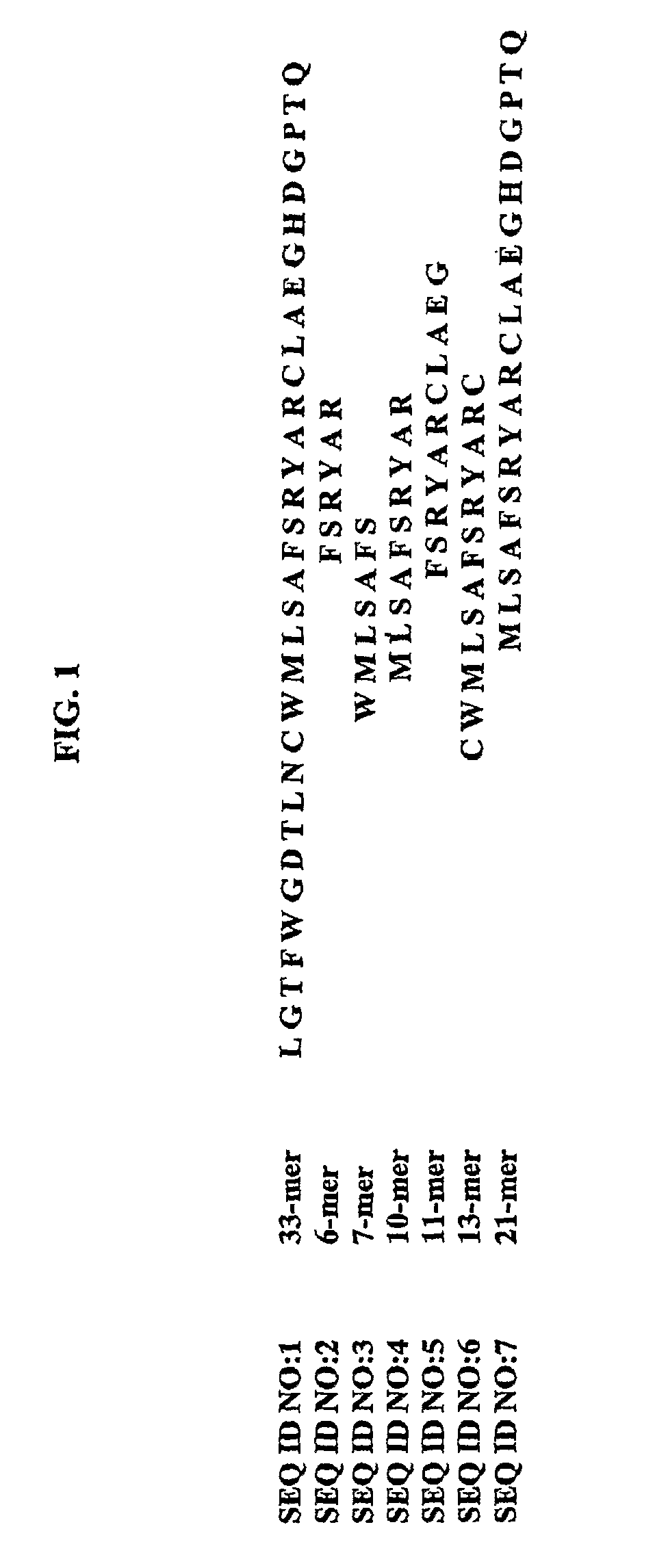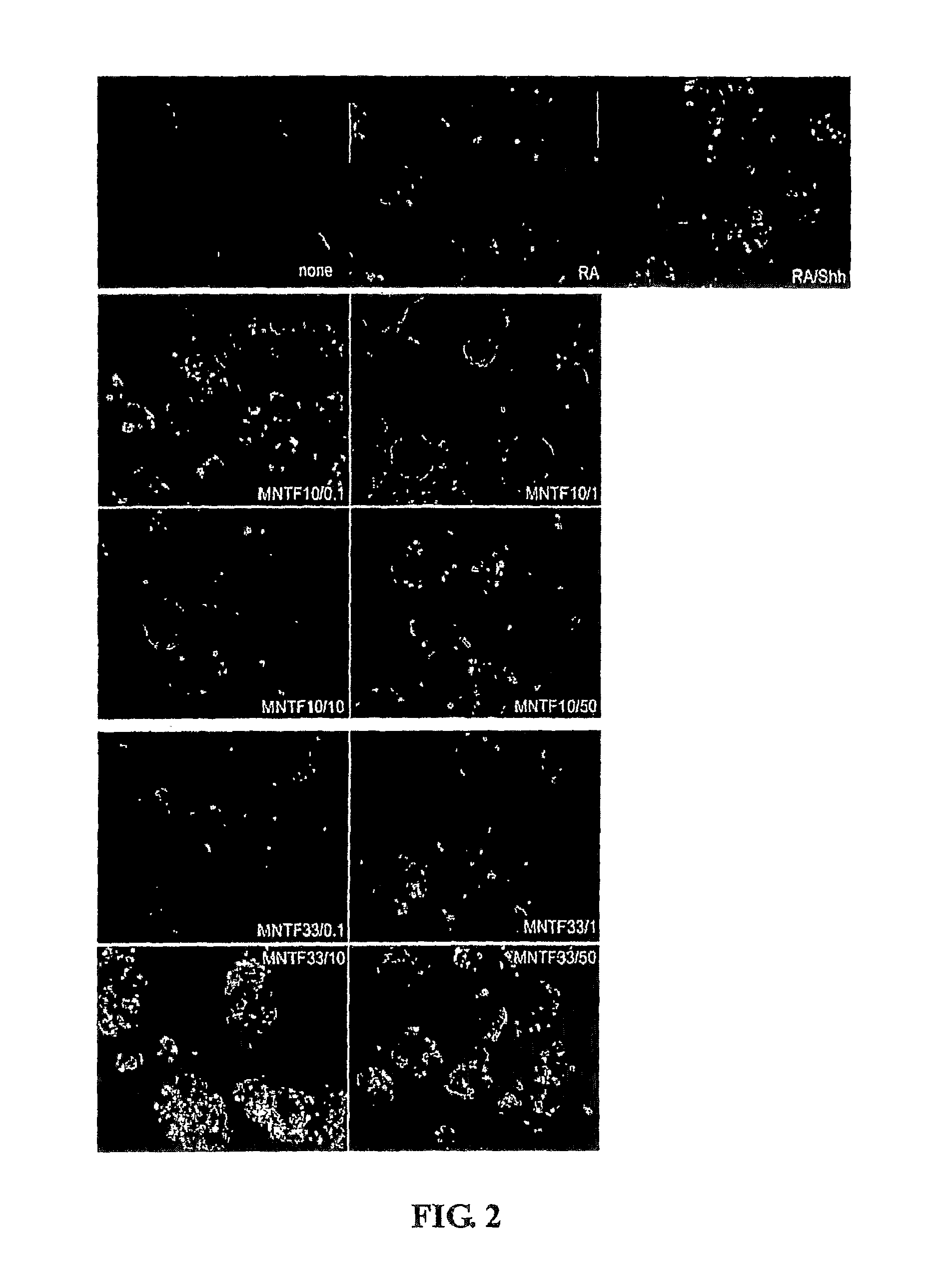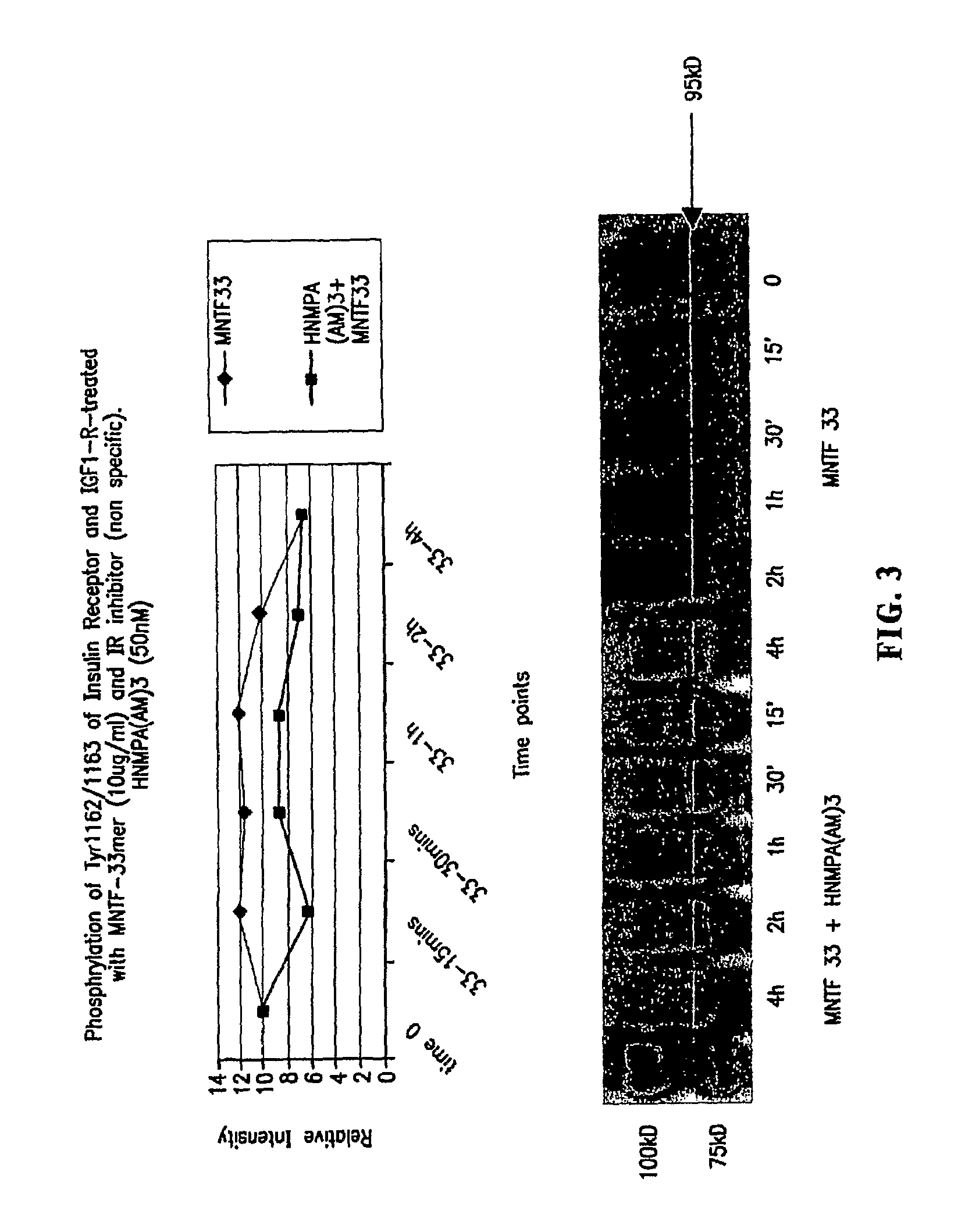MNTF differentiation and growth of stem cells
a stem cell and differentiation technology, applied in the field of stem cell differentiation and growth, can solve the problems of stem cells preventing the efficient generation of neurons in non-neurogenic regions of the cns, challenging non-invasive isolation and purification of significant numbers of neural stem cells from the brain, and promising embryonic stem cells potential, etc., to achieve the effect of enhancing the proportion of neural cells
- Summary
- Abstract
- Description
- Claims
- Application Information
AI Technical Summary
Benefits of technology
Problems solved by technology
Method used
Image
Examples
example 1
Differentiation of ES Cells into Motor Neurons
A. Materials and Methods
[0190]1. Embryonic Stem (ES) Cell Cultures
[0191]ES cells were derived from an HB9-GFP-transgenic mouse and fluoresce green upon adoption of a motoneuron phenotype [Wichterle, H. et al. (2000) Cell 110, 385-397, incorporated herein by reference]. The mouse ES cells were maintained in a proliferative and undifferentiated state in the presence of murine LIF (Chemicon). The ES cells were cultured on a feeder layer of primary mouse embryonic fibroblasts that were mitomycin treated.
[0192]2. Materials
[0193]Retinoic Acid (RA) was obtained from Sigma (R-2625). Sonic hedgehog (Shh) agonist, Hh-Ag1.3, was obtained from Curis, Inc. (Cambridge, Mass.). MNTF 6-mer, 7-mer, 10-mer, 11-mer, 21-mer, and 33-mer peptides were obtained by from CS Bio Company (Menlo Park, Calif.), who produced the peptides by solid phase synthesis in accordance with amino acid sequence information provided by Genervon Biopharmaceuticals LLC (Montebello...
example 2
MNTF Induced Differentiation in the Presence of SHH Inhibitor
[0199]The following example demonstrates the independence of MNTF-induced differentiation from the Shh pathway.
A. Materials and Methods
[0200]1. Materials
[0201]Cyclopamine-KAAD [3-keto-N-(aminoethyl-aminocaproyl-dihydrocinnamoyl)cyclopamine], which inhibits the Shh pathway at the smoothened receptor, was obtained from Calbiochem.
[0202]2. Experimental Protocol
[0203]The ES cells were differentiated as mentioned above and at day 0 they were treated with RA+Shh-Agonist; RA+Shh Agonist+Cyclopamine-KAAD (5 μM); RA+MNTF (33mer at 10 μg / ul); and RA+Cyclopamine-KAAD (5 μM)+MNTF (33mer at 10 μg / ul). The inhibitor was pretreated for an hour before the addition of the other components.
[0204]3. Assay
[0205]At day 5 of differentiation the embryoid bodies were checked for GFP fluoresence indicating the differentiation of the ES cells into a motor neuron phenotype.
B. Results
[0206]Cyclopamine-KAAD (5 μM) blocked the GFP fluoresence effect of...
example 3
Autophosporylation of Insulin / IGF Receptor(s) in Response to MNTF
A. Materials and Methods
[0208]1. Materials
[0209]HNMPA-(AM)3 (Hydroxy-2-naphthalenylmethylphosphonic acid trisacetoxymethyl ester), a non-specific inhibitor of insulin receptor (IR), was obtained from Alexis Biochemicals. Rabbit (polyclonal) Anti-Insulin / Insulin Growth Factor-1 Receptor (IR / IGF1R) [pYpY1162 / 1163] Phosphospecific Antibody was obtained from Biosource International (Camarillo, Calif.).
[0210]2. Experimental Protocol
[0211]Embryoid bodies (EBs) were exposed to RA (1 μM)+MNTF 33mer (10 μg / ml) or RA (1 μM)+MNTF 33mer (10 μg / ml)+ / −HNMPA-(AM)3 (50 nM). Cells were harvested at 0, 15 min, 30 min, 1 h, 2 h and 4 h time points.
[0212]3. Western Blot
[0213]The cells were harvested as described previously [Barber, A. J. et al., (2001) J. Biol. Chem. 276, 32814-32821]. Protein concentrations were measured with the Pierce BCA reagent, and all samples were adjusted for equal protein before SDS-polyacrylamide gel electrophor...
PUM
| Property | Measurement | Unit |
|---|---|---|
| Tm | aaaaa | aaaaa |
| Tm | aaaaa | aaaaa |
| temperatures | aaaaa | aaaaa |
Abstract
Description
Claims
Application Information
 Login to View More
Login to View More - R&D
- Intellectual Property
- Life Sciences
- Materials
- Tech Scout
- Unparalleled Data Quality
- Higher Quality Content
- 60% Fewer Hallucinations
Browse by: Latest US Patents, China's latest patents, Technical Efficacy Thesaurus, Application Domain, Technology Topic, Popular Technical Reports.
© 2025 PatSnap. All rights reserved.Legal|Privacy policy|Modern Slavery Act Transparency Statement|Sitemap|About US| Contact US: help@patsnap.com



